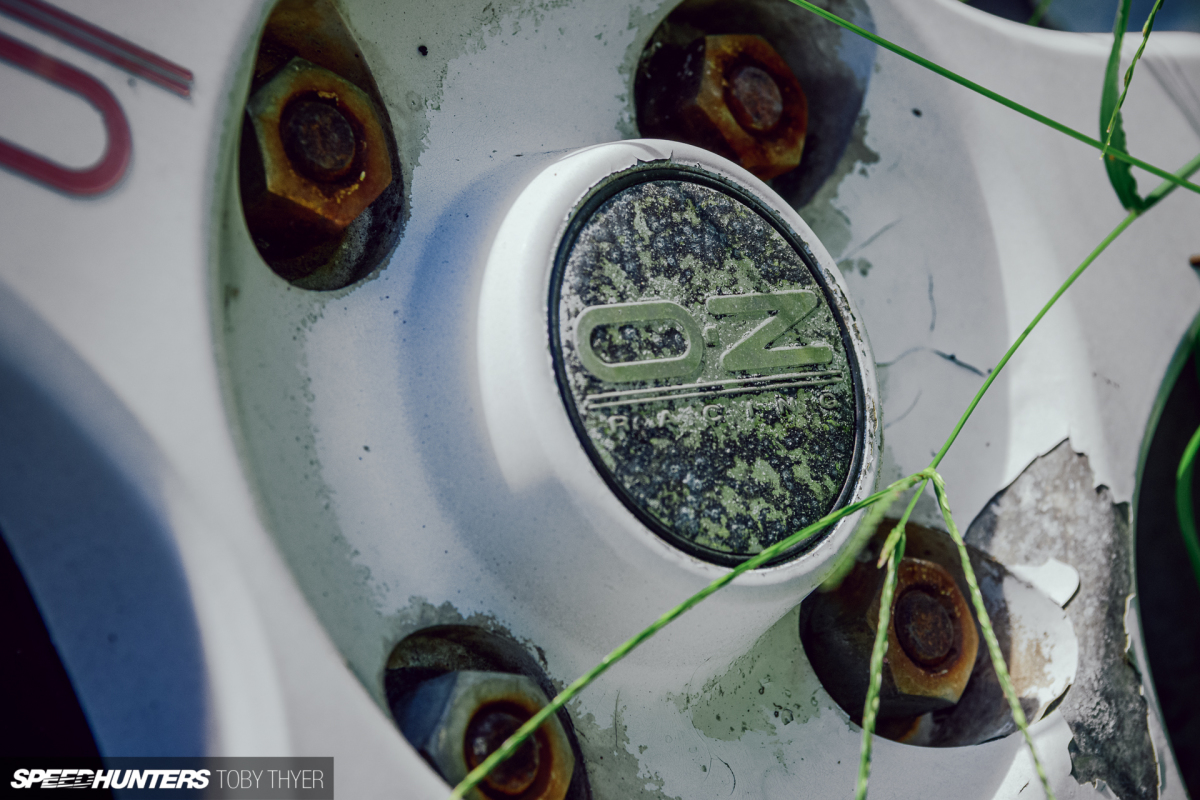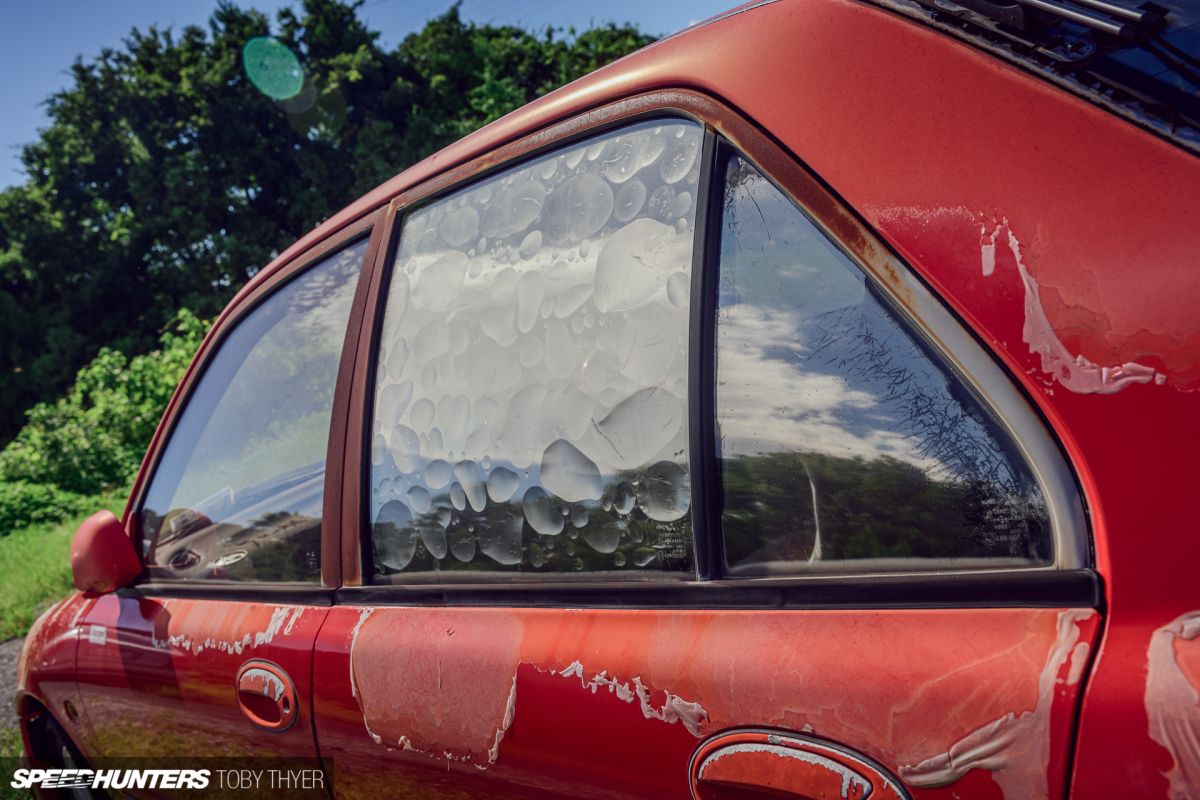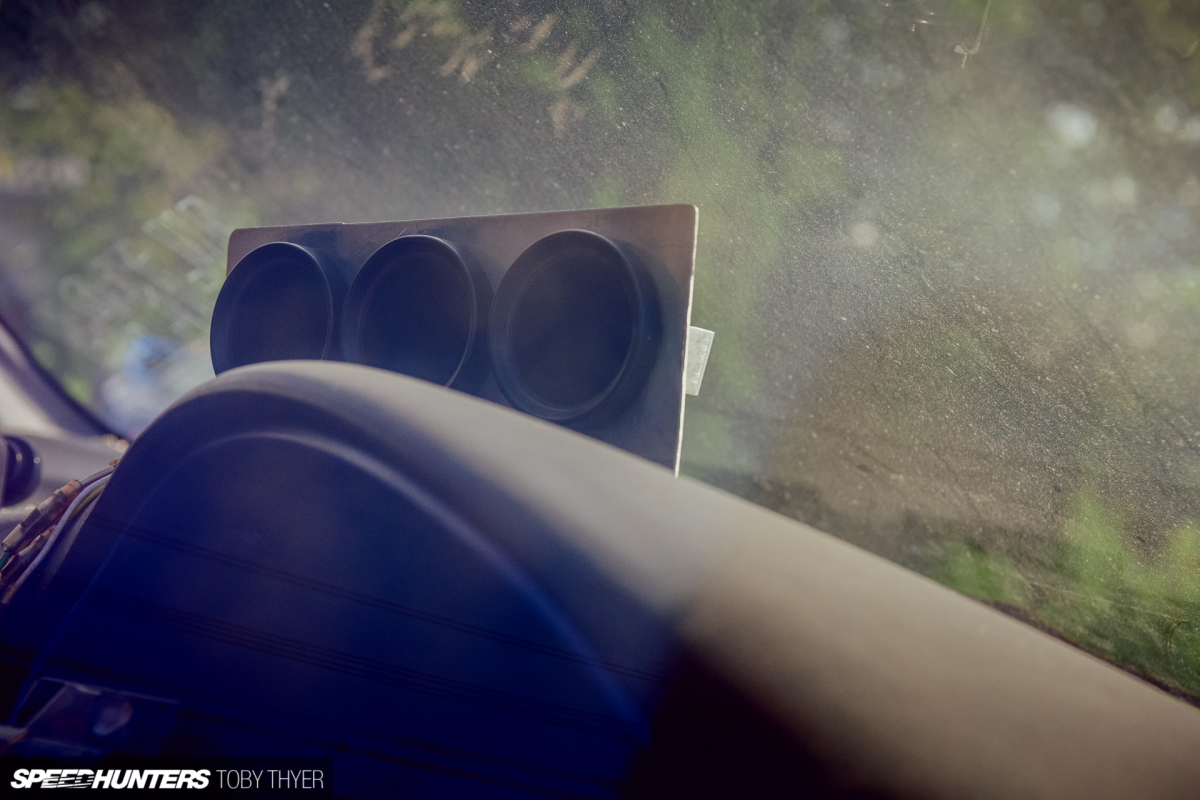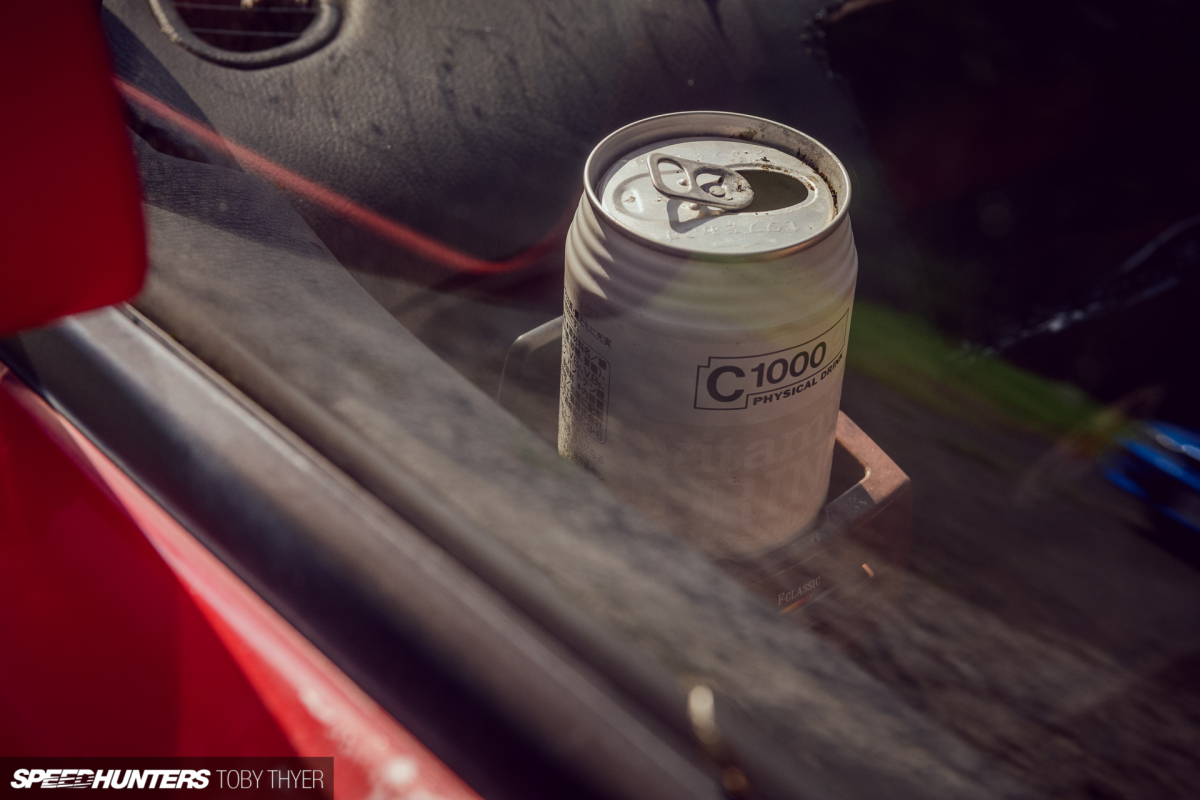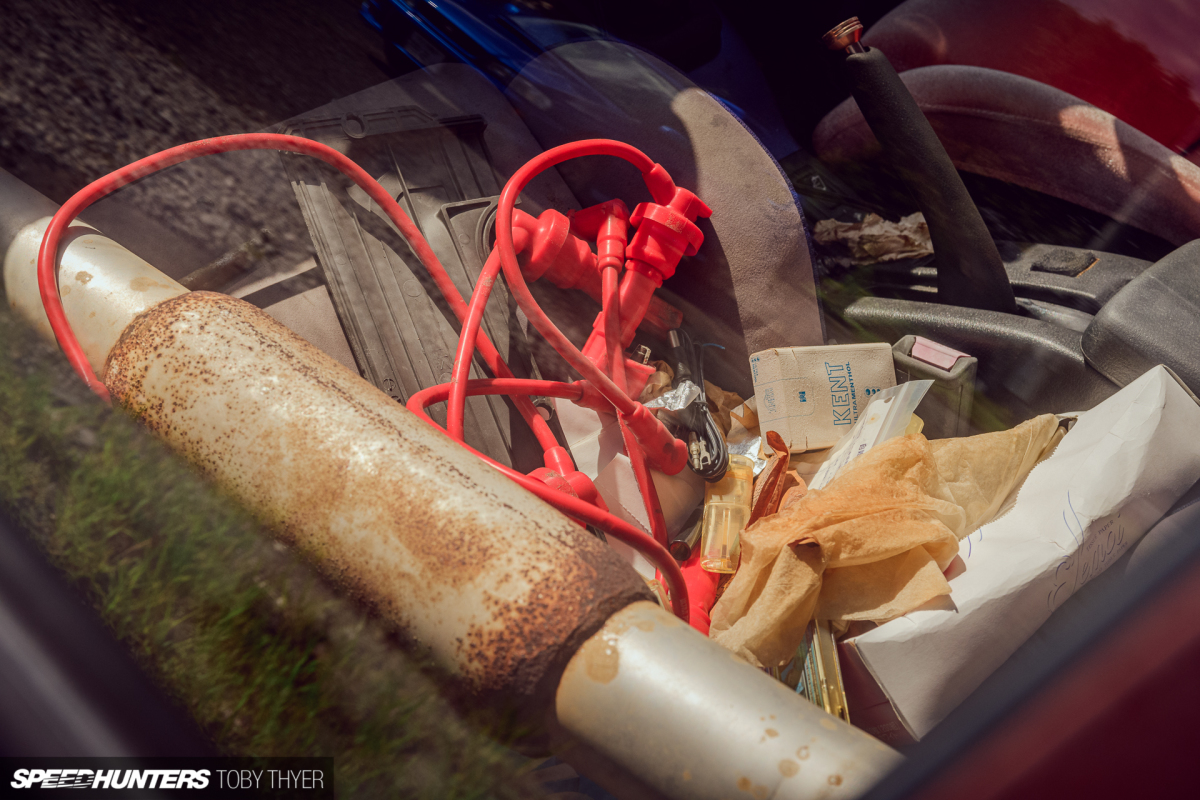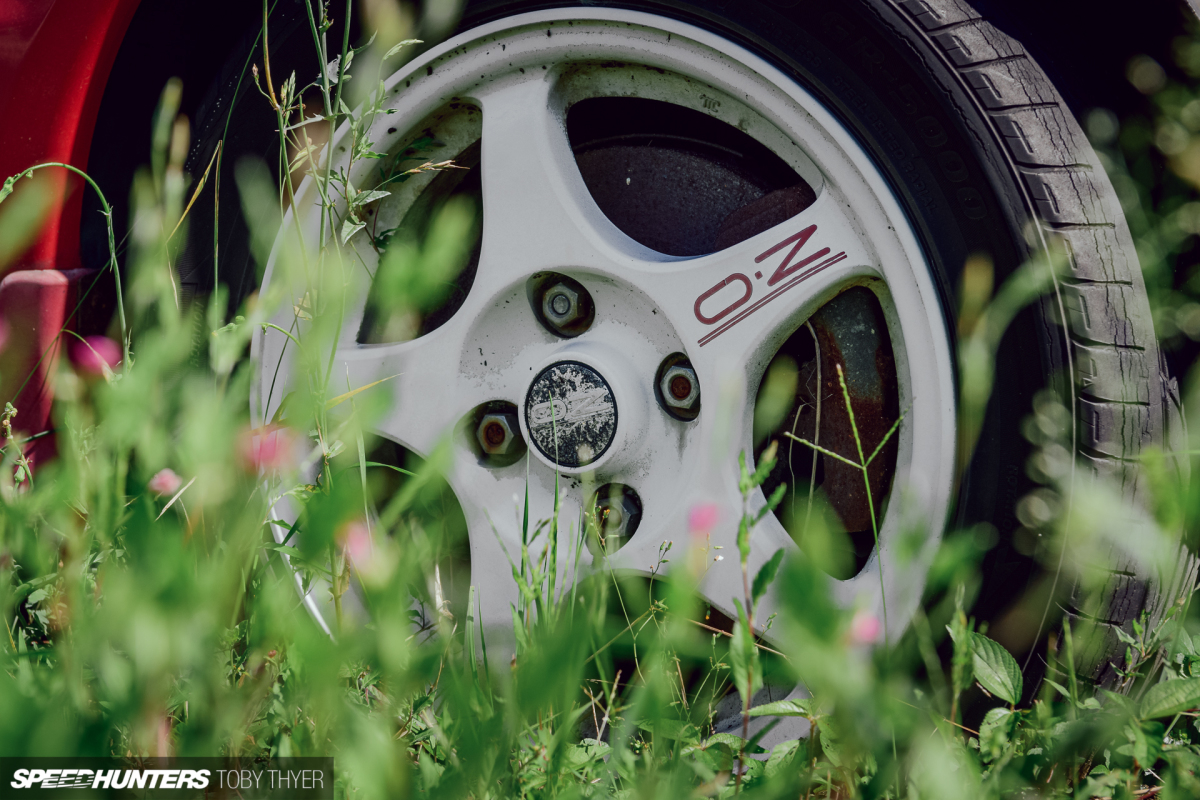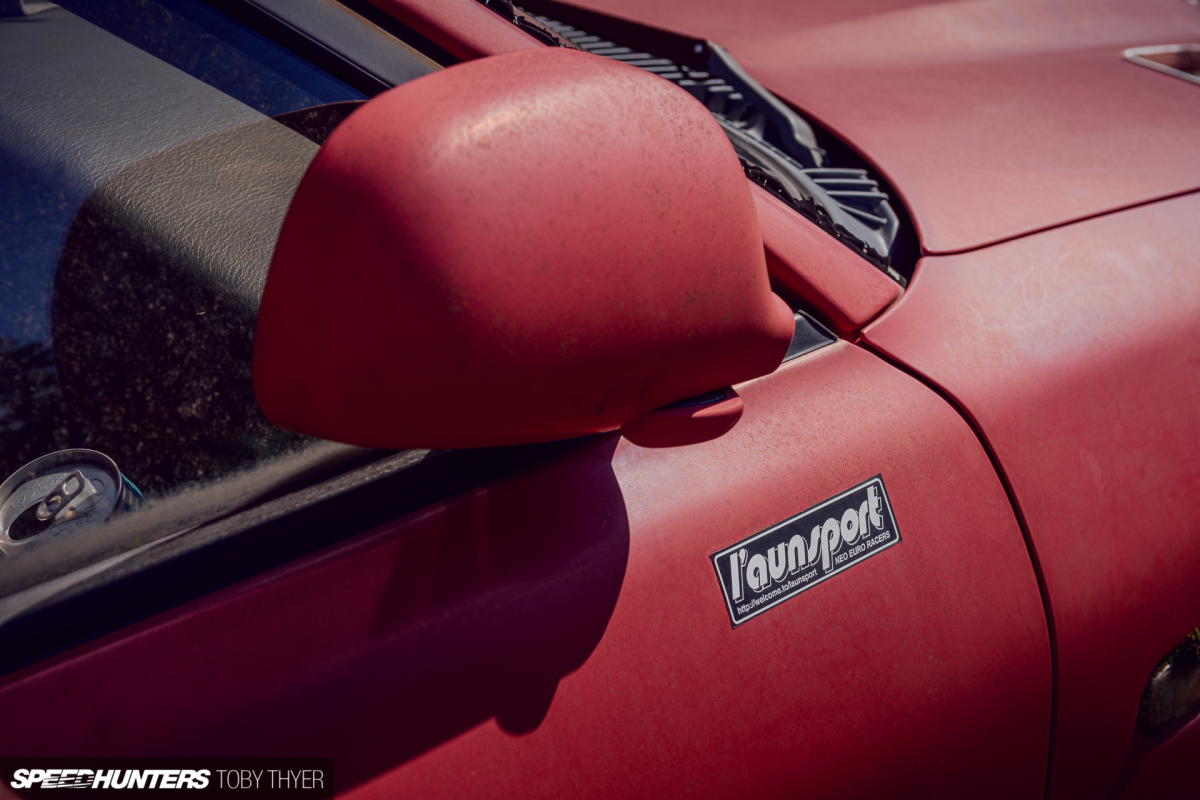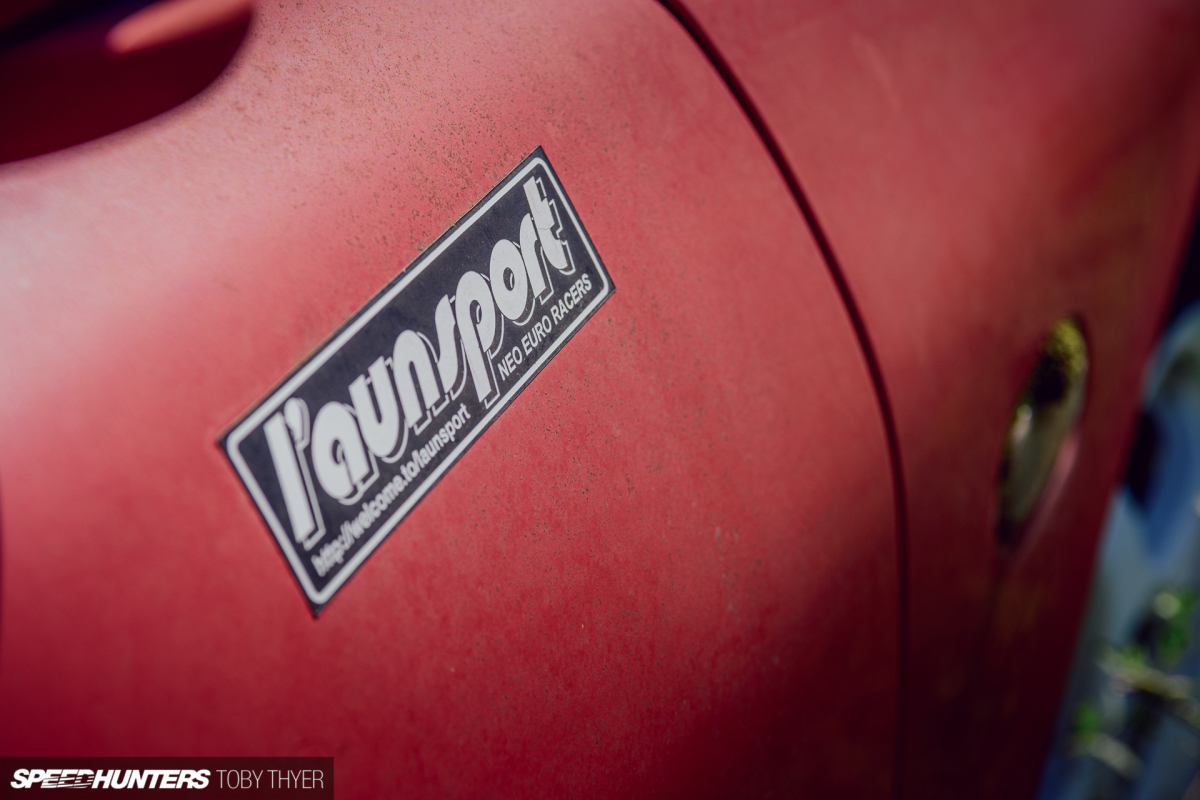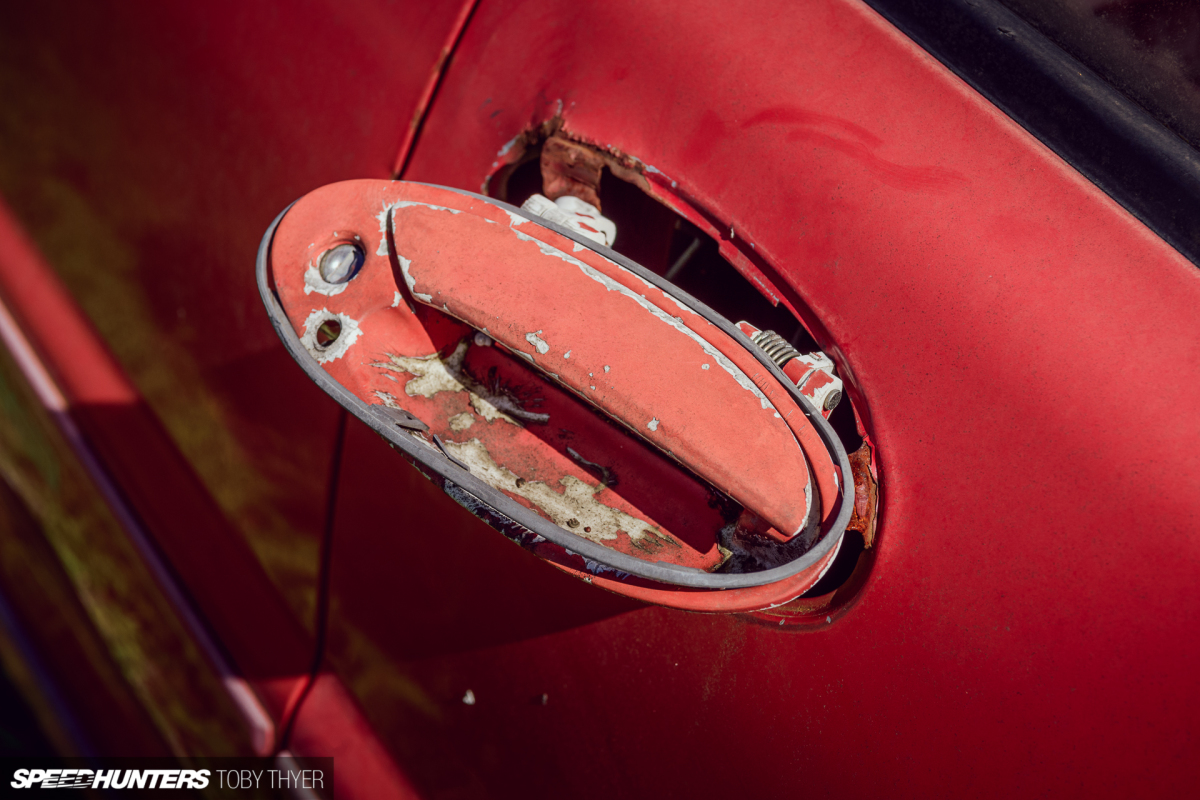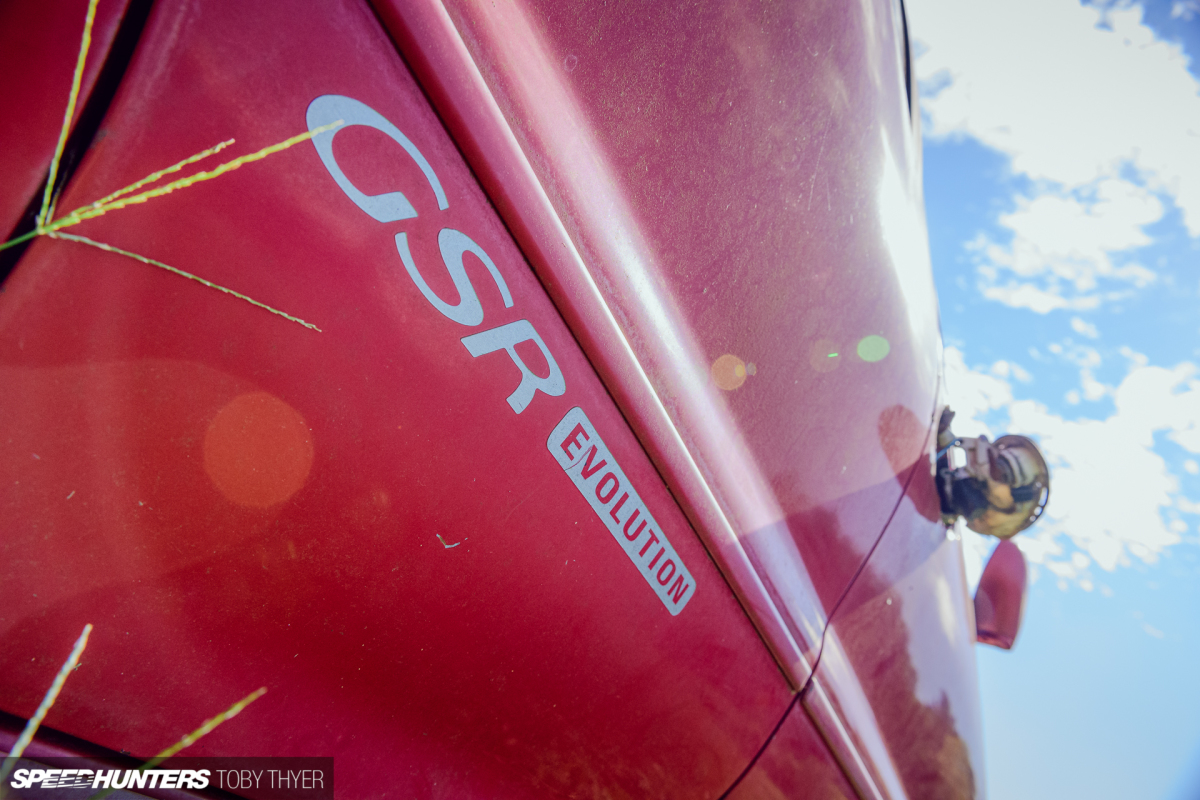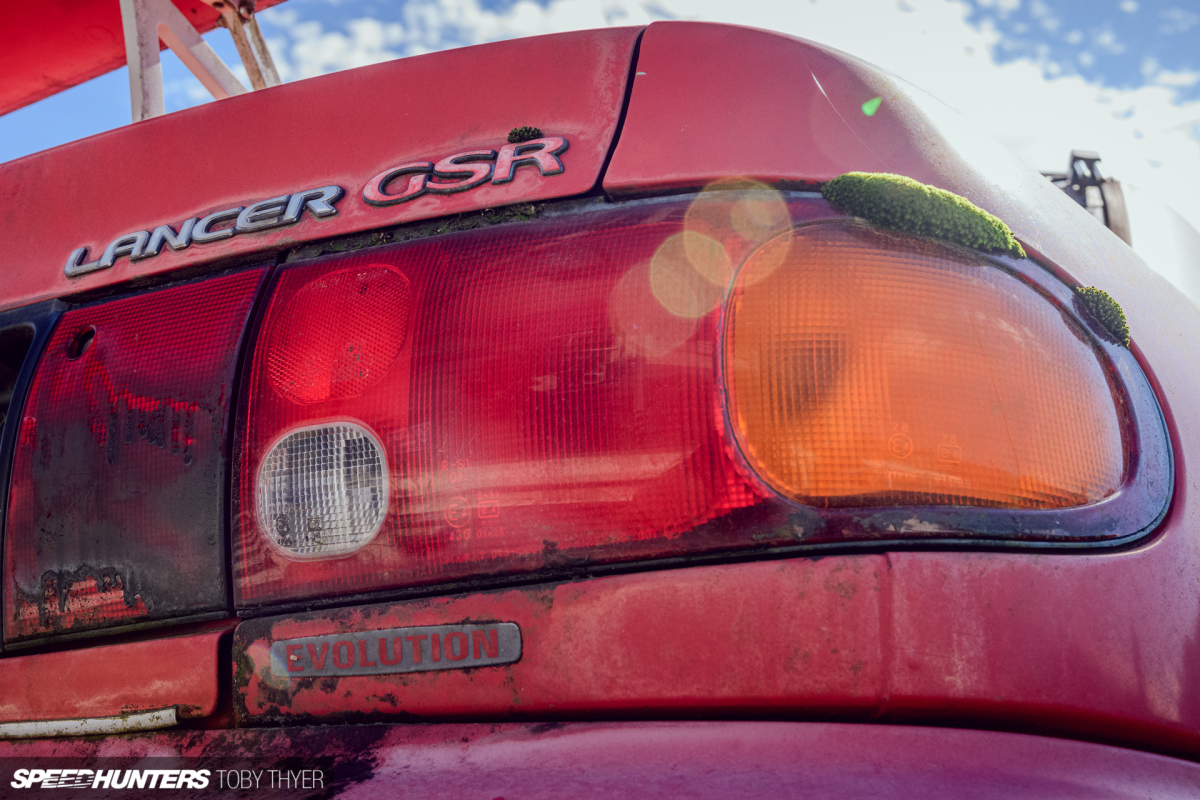I wouldn’t necessarily classify myself as a bleeding heart, but in a parallel universe you would probably find me opening the doors to my farm to all the stray and injured animals of the world. Truth be told, all animals make me melt, but let’s be sensible and make it dog exclusive. Which is why, in this universe, a big part of me wants to rescue this decaying Mitsubishi Lancer Evolution I GSR.
Of course this is pure fantasy, so, inspired by Dino and Ron’s stories on abandoned/unloved cars in Japan, I thought the very least I could do to honour this Evo’s legacy would be to bring you a look around before it returns to the ground.

So, what is it exactly? It’s probably not quite the World Rally Championship-dominating Evo that you might recognise from those heady days of Group A, but this is indeed a Lancer Evolution – the very first to carry the badge and the predecessor to a lineage that won four WRC drivers’ titles.

Like Subaru, who had been championing their Legacy RS, Mitsubishi had been making wins in their Galant VR-4, but soon realised that a lighter, smaller car was required to tackle the WRC’s challenging special stages.
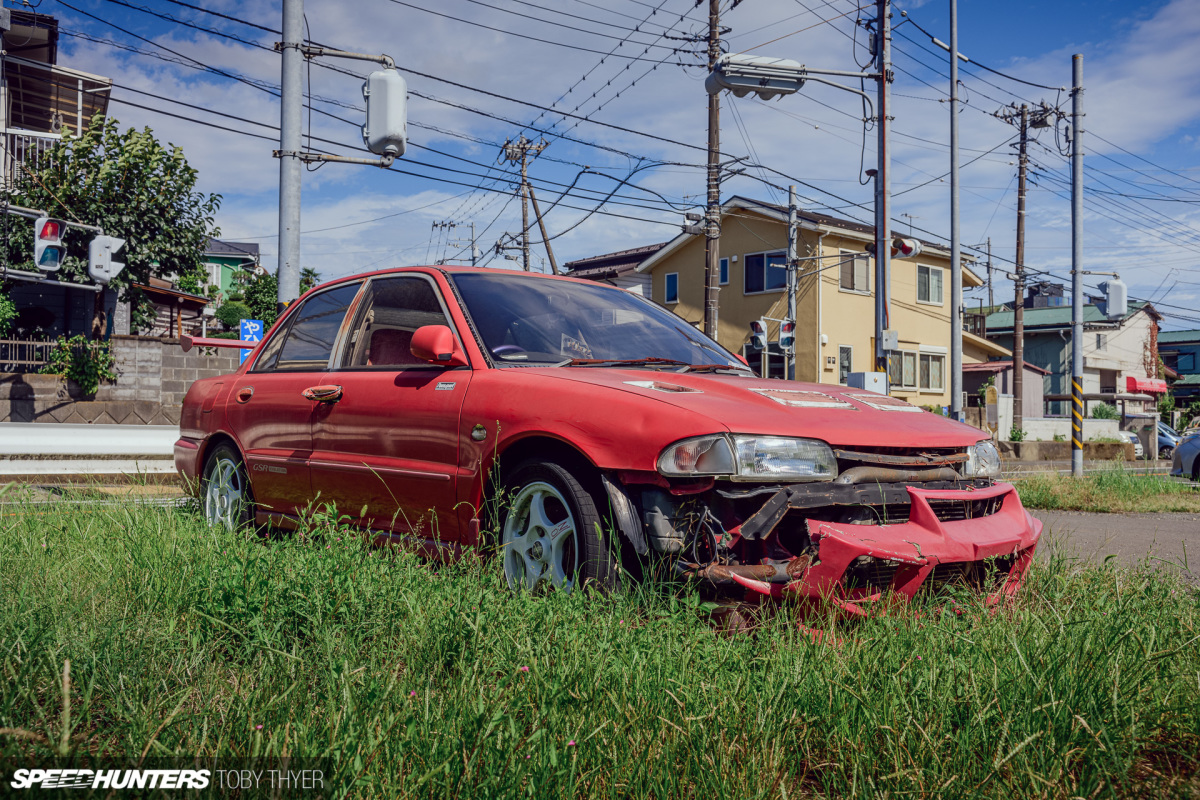
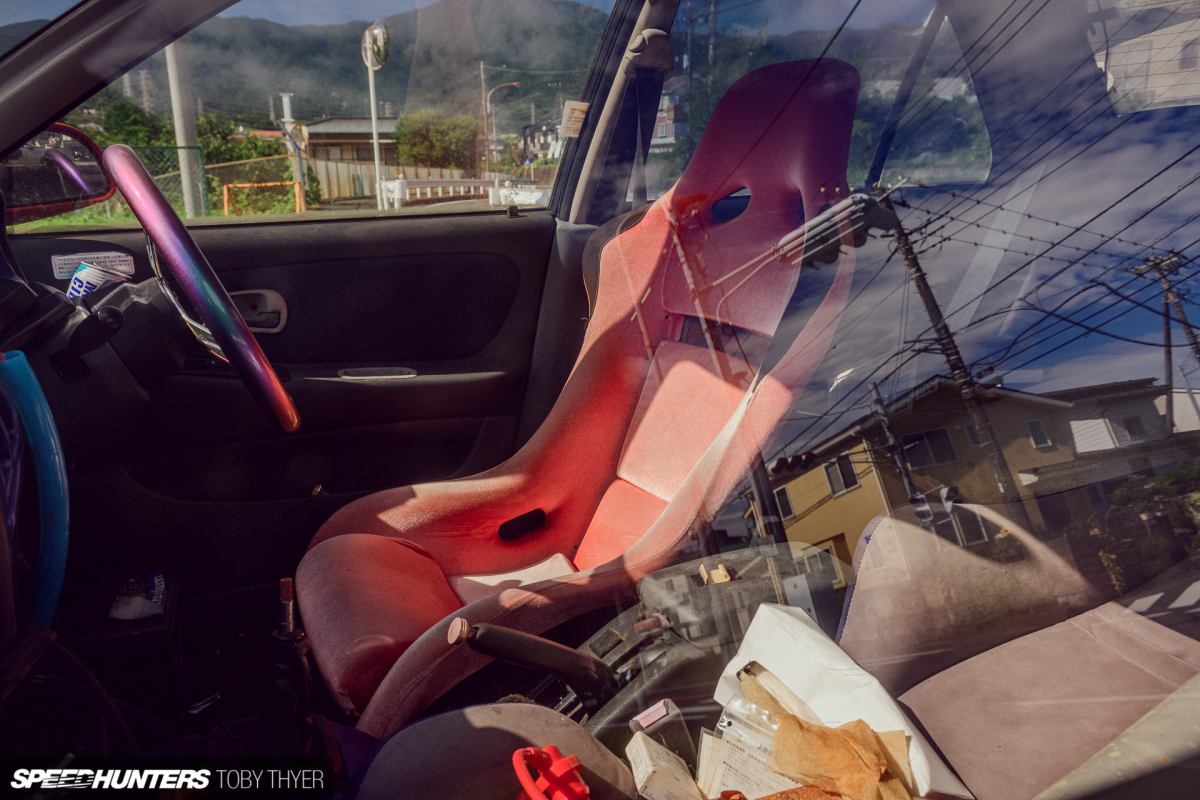
This wasn’t the first Lancer to carry the GSR badge. Back in the day, Mitsubishi took three consecutive wins in Australia’s Southern Cross Rally with their Lancer 1600 GSR. That car was championed by Andrew Cowan, who incidentally went on to establish Ralliart Europe, the company responsible for building all of the works Mitsubishi WRC rally cars right up to 2005.


When the Evo I hit the rally stages in 1993 it was competitive (as the Galant had been previously), but it wasn’t until Mitsubishi upped the power and tweaked the aero design of the front splitter and rear wing of the Evo III that they finally took a victory.
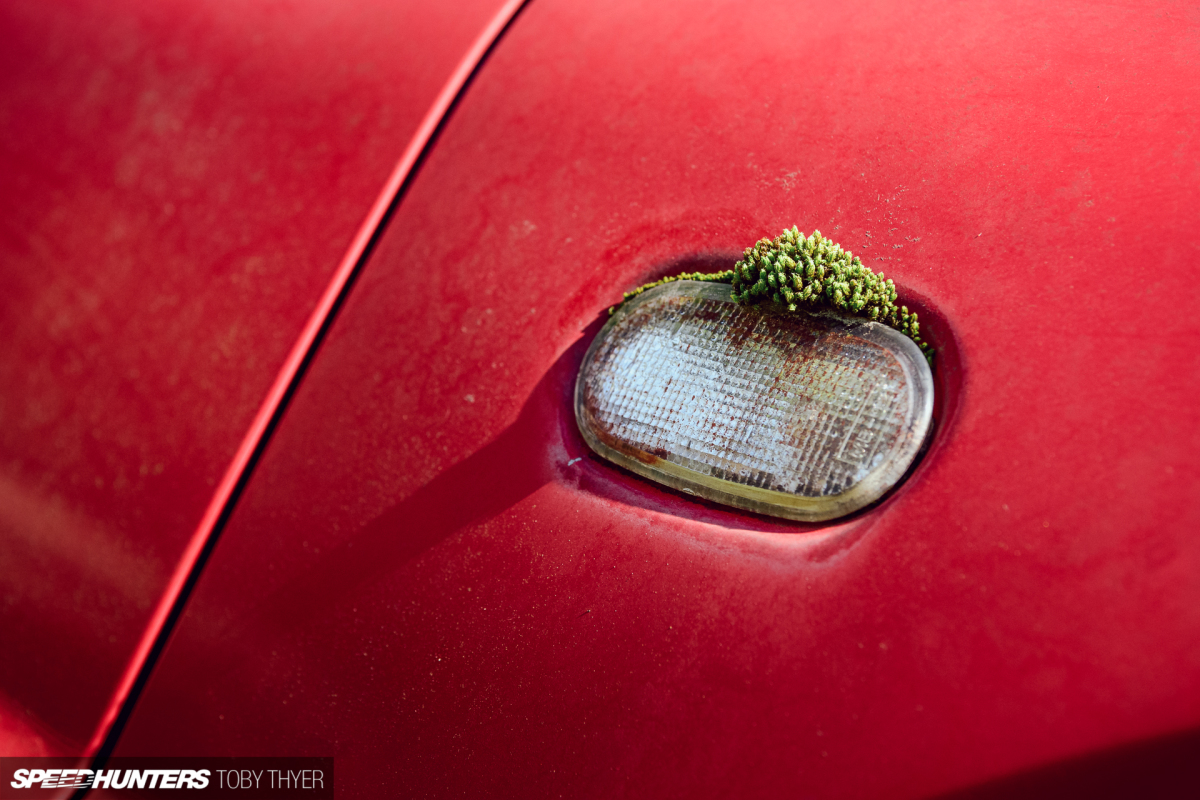
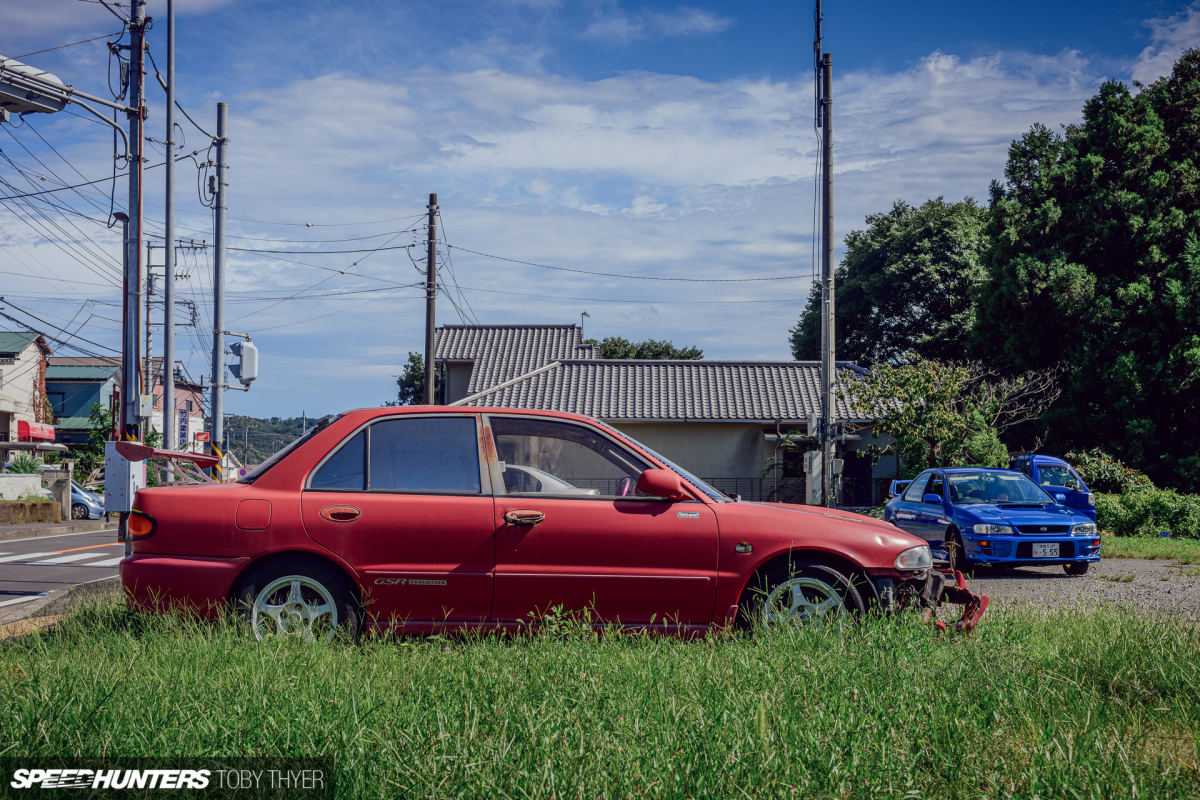
But underneath the decaying, moss-covered exterior of this Evo I is the same 4G63T engine, 5-speed manual and AWD system found in later models. That spells huge potential.

Only 5,000 of these where built for homologation purposes, which is probably why this one is still having its parking paid for and not heading to the wreckers yard just yet.
I’m interested to know what you see here? Is it a piece of automotive history worth preserving, or a forgotten relic not worth the effort?
Toby Thyer
Instagram _tobinsta_
tobythyer.co.uk
!function(f,b,e,v,n,t,s){if(f.fbq)return;n=f.fbq=function(){n.callMethod?
n.callMethod.apply(n,arguments):n.queue.push(arguments)};if(!f._fbq)f._fbq=n;
n.push=n;n.loaded=!0;n.version=’2.0′;n.queue=[];t=b.createElement(e);t.async=!0;
t.src=v;s=b.getElementsByTagName(e)[0];s.parentNode.insertBefore(t,s)}(window,
document,’script’,’//connect.facebook.net/en_US/fbevents.js’);
fbq(‘init’, ‘1037728282936046’);
fbq(‘track’, “PageView”);
window.fbAsyncInit = function() {
FB.init({
appId : ‘252792185178857’,
cookie : true,
xfbml : true,
version : ‘v2.8’
});
FB.AppEvents.logPageView();
};
(function(d, s, id){
var js, fjs = d.getElementsByTagName(s)[0];
if (d.getElementById(id)) {return;}
js = d.createElement(s); js.id = id;
js.src = “http://connect.facebook.net/en_US/sdk.js”;
fjs.parentNode.insertBefore(js, fjs);
}(document, ‘script’, ‘facebook-jssdk’));
(function(d, s, id) {
var js, fjs = d.getElementsByTagName(s)[0];
if (d.getElementById(id)) return;
js = d.createElement(s); js.id = id;
js.src = “//connect.facebook.net/en_US/sdk.js#xfbml=1&version=v2.8&appId=160417550742798”;
fjs.parentNode.insertBefore(js, fjs);
}(document, ‘script’, ‘facebook-jssdk’));
Source link


